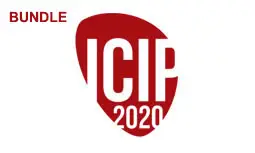-
Members: FreeSPS
IEEE Members: $11.00
Non-members: $15.00Length: 33:21
25 Oct 2020
Modern imaging devices can capture a sampling of the so called plenoptic function which represents the amount of light in time and in space, theoretically obtained by positioning a pinhole camera at every viewpoint in 3D spatial coordinates, every viewing angle and every wavelength.
Several consumer and industrial applications may benefit from these emerging image modalities, such as, immersive visual content browsing with novel special effects and novel user-content interaction modalities, light field displays, medical holography imaging, robotic perception. Common and recognized tools to represent and compress the different plenoptic functions are needed for fostering the development of novel light field and holography based applications and for providing interoperability tools. To address these issues, the ISO/IEC JTC 1/SC 29/WG 1 (JPEG committee) is working on a new standard for light field, holography and point cloud compression.
The objective of this tutorial is to provide a basic understanding of the theoretical concepts of these novel image modalities, to present how the light field and holography compression problems are being addressed within the upcoming JPEG Pleno standard, to present practical example of how to experiment the JPEG Pleno reference software, and to discuss related open research problems.
Several consumer and industrial applications may benefit from these emerging image modalities, such as, immersive visual content browsing with novel special effects and novel user-content interaction modalities, light field displays, medical holography imaging, robotic perception. Common and recognized tools to represent and compress the different plenoptic functions are needed for fostering the development of novel light field and holography based applications and for providing interoperability tools. To address these issues, the ISO/IEC JTC 1/SC 29/WG 1 (JPEG committee) is working on a new standard for light field, holography and point cloud compression.
The objective of this tutorial is to provide a basic understanding of the theoretical concepts of these novel image modalities, to present how the light field and holography compression problems are being addressed within the upcoming JPEG Pleno standard, to present practical example of how to experiment the JPEG Pleno reference software, and to discuss related open research problems.



